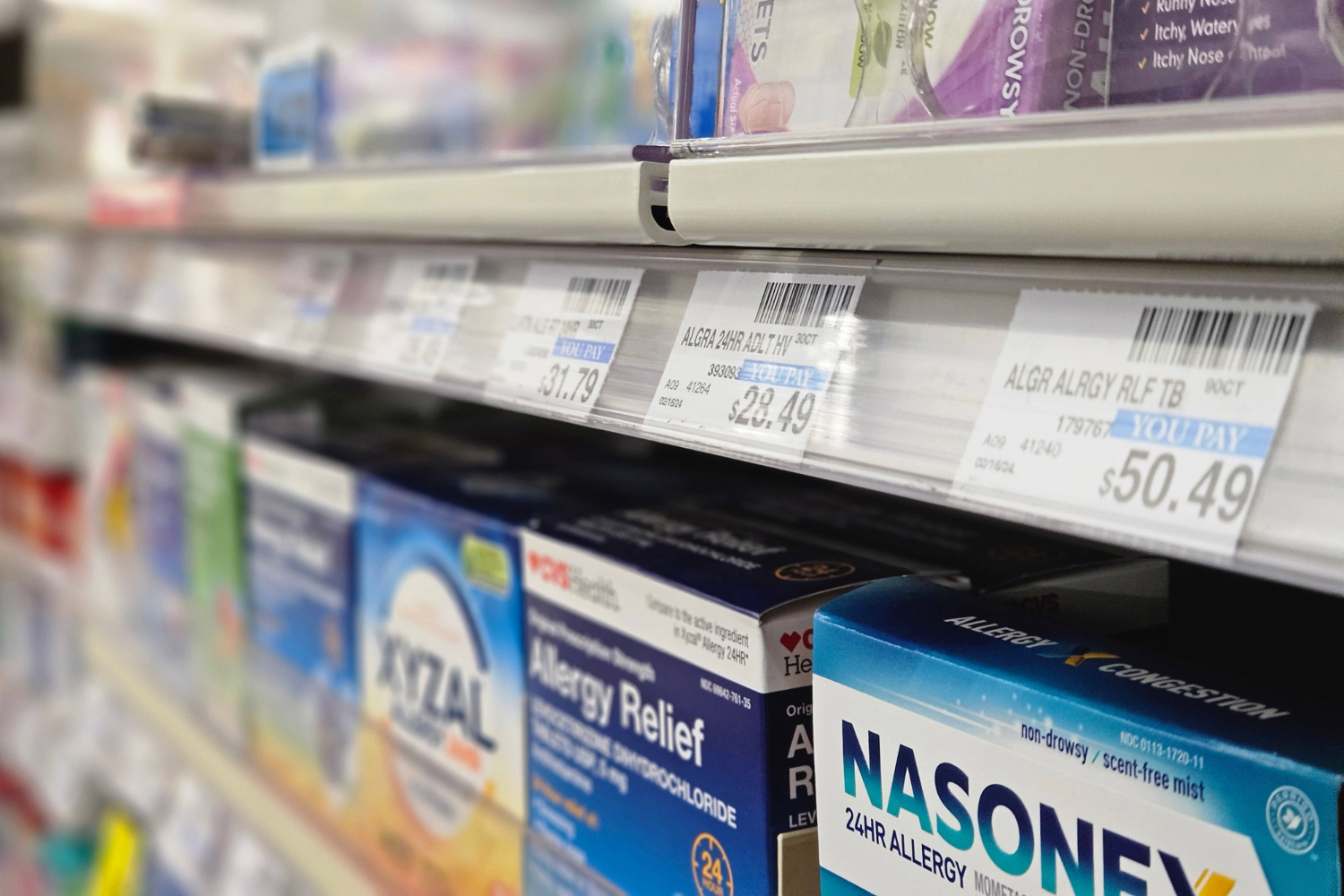Picture this: You’re at your cousin’s house, celebrating your aunt’s 50th birthday. You spot a slice of cake, sitting idly on top of the kitchen table. You taste it. It’s just as good as you imagined.
You go home that night with a happy heart and stomach full of good food. As you get ready for bed, your throat suddenly starts to close up. You can’t breathe. The feeling of little needles starts to stab the back of your eyes, urging you to rub them until swollen. At the same time, your nose begins to clog, drowning you on dry land. It happens in the blink of an eye; the feeling of your body shutting down.
You wake up to find yourself lying flat on the hospital cot with an intravenous therapy drip (IV) in your arm, unaware of what had just happened.
This is what happened to Madeleine Poon, an adolescent girl struggling with the avoidance of everyday histamine encounters, or in other words, allergies.
To make matters worse, these kinds of traumatic events weren’t an unusual occurrence either for Poon. Having many types of food-specific allergies, she grew to be wary of the things she ate.
“I’m still really skeptical about cakes or desserts because that’s how this all happened; a defective grocery store cake that they said had no tree nuts or peanuts. The sensation of asphyxiation is not pleasant,” Poon said.
Luckily, her family had been acclimated to dealing with these reactions in a pinch, hastily injecting an EpiPen into her left thigh to slow down the allergic reaction, stalling the inflammation occurring in Poon’s airways.
But what if she didn’t have an EpiPen?
As concerns within medicinal fields continue to rise over the years, so do the so-called treatments and solutions. However, this does not come without a cost. With more worry comes more demand, making treatments less financially accessible for people who rely on these resources.
In the case of Poon, the world turns its head to the consumption of the anaphylactic relief shot, EpiPens, an epinephrine injection device that retails for 10,000% of its manufacturing cost without insurance, according to GoodRx.
“The justification for the EpiPen’s price is that ‘it can potentially save your life,’ but for that same reason, it shouldn’t cost such a ridiculous amount to the point where you literally have to pay for your life,” said Midely Medina, a nurse at The Allergy & Asthma Clinic.
The treatment in question
Given the severity of the reaction, many assume that Poon’s reaction is the result of some life-changing, insufferable sickness. allergies have been and continue to be one of the most polarizing conditions in the medical field. Fortunately, they are also known to be some of the most treatable over time.
One of these treatments is known as allergen immunotherapy, otherwise known as allergy shots.
“The good news with allergies is that the allergy shots are actually very effective. We say about 80% of people have significant improvement in their symptoms after they do the three-to-five-year course,” said Julia Cronin, an allergist working at Sutter Health.
With the knowledge of how much it costs to save someone in a life-or-death situation using the EpiPen, what would happen if someone did not have one on hand? While the rate of death by anaphylaxis is low, about 0.33% according to writers at The Journal of Allergy and Clinical Immunology, fatal consequences may come if the condition is left untreated.
As the prices of medical care increase, living a healthy life becomes increasingly unaffordable, as new illnesses continue to emerge. However, at the counter, most people turn a blind eye to the prices they pay, neglecting to consider the validity of the hit their wallets are taking when paying for necessary drugs.
The price of development
It is hard to pinpoint the actual justification as to why medicine may be unaffordable, as the process of developing the drug itself is already incredibly expensive. Throughout the process of Research and Development (R&D), many things occur.
“The pricing needs to cover all of the research. The clinical trials we run are not free; they’re very expensive,” said Daniel Poon, a drug researcher, and developer working for RAPT Therapeutics, who is also Madeleine Poon’s father.
In order for a drug to be put on the market, it must pass clinical trials, many of which the drug will fail. According to the American Society for Biochemistry and Molecular Biology (ASBMB) Magazine, 90% of all clinical trials fail, meaning that only one in 10 drugs actually get released into the market.
The trials themselves already factor in a significant portion of the cost of the drug, not to mention marketing, manufacturing, and labor costs.
“Manufacturing is at most 10% of the cost. The one successful trial has to pay for the others. It has to pay for all the failed programs and it has to pay for itself. That is one of the biggest price drivers,” Daniel Poon said.
Name-brand or generic?
To take it at face value, a lot of the price inflation occurring within medicine can be attributed to the use of over-the-counter name brands.
For example, Benadryl, the leading diphenhydramine-producing or allergic reaction-suppressing brand, retails for about $0.14 per 25 mg tablet, while generic brands like AmazonBasics can drop to around $0.02 per 25 mg tablet, making a markup of seven times the generic price. Name brands and bright coloring often correlate to the price of the medicine.
Even though name-brand medications may look different, there is evidently little difference in the actual medication itself, or at least the part of it that is vital to the human body.
“To be more technical about it, the generics refer to the active ingredient itself, but the drug is actually more than that. It includes the excipient, which helps your body to absorb the drug. This can change with generic brands, but it doesn’t change the therapeutic value of the drug that much,” Daniel Poon said.
However, with or without facts, preference towards name-brand drugs still can be seen when looking at a study from The Intake, which shows that three in five people prefer to buy name-brand over-the-counter medications but don’t due to the price and other financial constraints.
“General allergy medication tends to be over-the-counter, which is pretty pricey as is. If you go to Target or Walgreens, you’ll find a bottle of Zyrtec for around $20-$30, which is really expensive. If you look for generic brands like Costco, you can normally find cheaper options,” Medina said.
Financial inequality
In addition to branding and marketing schemes, many people with lower incomes aren’t able to afford as much in terms of medical welfare, having marginal amounts of government support to satiate them.
While many younger generations under the insurance coverage of their parents are ignorant of the price of their medical welfare, there are plenty of people within the poorer ends of society who do not have this luxury, especially with rates of healthcare inflation rising by around 3% since the start of 2024 according to the U.S. Bureau of Labor Statistics.
“Any biological drug is going to be crazy expensive. Hopefully, it’s insurance covered but people without insurance cannot even consider using those types of medications,” Cronin said.
Regardless of whether or not medicine becomes cheaper, it remains an alarming fact that countless people are unable to afford and acquire the resources they need in order to live a healthy life. According to the Census, 8% of America is unable to afford healthcare, quantifying approximately 27.2 million people.
The American price tag
As the prices of American healthcare become one of the main drivers of the unaffordability of medicine, people start to look at other continents and political territories, comparing the state of our medical economy to others, mainly Europe.
According to a study by The Organization for Economic Cooperation and Development (OECD), Americans pay 203% more than Europeans for prescription drugs.
“The Europeans would rather not take drugs if they don’t have to, whereas in the U.S., the automatic thought is ‘Can I get a pill?’ If you want to lose weight, people say ‘Can I have a pill for that?’ Because of this, the U.S. has a much higher demand for drugs than Europeans do, which drives up the prices,” Daniel Poon said.
In addition to this, a European policy that includes a variety of free medications for people who need them left many questioning the necessity of the recurring issue of EpiPen prices.
“America really needs to rethink the price of these epinephrine injections because, in Europe, they’re basically free,” Medina said.
Despite this, there is some justification as to why American medicine costs more, this being that the quality standards of American medicine are notably higher than that of other countries.
According to a recent comparison of international drug regulations, the European Union (EU), the administration that regulates drugs in Europe, is notably less strict with drug manufacturing than the U.S. Food and Drug Administration (FDA).
“The FDA is saying that there are other standards from other countries that jeopardize our safety because they’re not on the same level. There’s definitely some truth to that, but much of it is debatable,” Daniel Poon said.
Solutions at rest
However, there are actions in place to help revert these inequalities.
In terms of health insurance, the Office of Health Care Affordability (OHCA)’s Board in April this year approved a spending target of 3% to be phased in over the course of the next five years, making health insurance more affordable according to the California Department of Health Care Access and Information (HCAI).
Medical coupons and insurance are also likely to play a big role in the normalization of affordable medicine.
“With the help of some insurances and coupons like GoodRx, I think allergy treatment and medical treatment in general will get cheaper in the future,” Medina said.
To appeal to the international market, broader thoughts spark the idea of opening up the medical market to the rest of the world, bringing down the prices of field-specific medication.
“We have, in fact, what they call a protected market. If we loosen up in the light of importation and bringing in foreign medicine, which unbinds the competition, there will be more consumer benefits. It will drive the prices down,” Daniel Poon said.
As a more quantifiable reduction, medical device retailers such as Boehringer Ingelheim, AstraZeneca, and GSK, as of January 2025, are being required to put a $35 cap on inhalers, increasing the affordability of life-changing medical technology according to the Asthma & Allergy Network.
“We as individuals cannot afford these drugs. Insurance companies, as a collective, can. The government, as a collective, can because they can do it in bulk,” Daniel Poon said.



